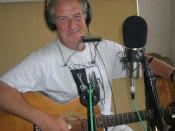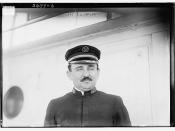The drama of the young man's experience in the excerpt from Cormac McCarthy's The Crossing is highlighted throughout the entire passage. McCarthy uses syntax, diction, and imagery to show the reader the impact the dramatic experience has on the protagonist.
The varied and, at times, convoluted sentence structure that McCarthy uses helps convey the impact of the experience on the character. McCarthy uses a very long sentence with no punctuation to describe a series of actions by the character, which helps the series of events move. This creates a moving, busy, yet droning sensation in the reader, which mirrors the feeling in the character at this point. McCarthy also uses short, choppy sentences at the beginning of the passage as well as after the character wakes up, which convey his blunt thought processes at these points in his night. Toward the end of the passage, his sentence structure becomes increasingly convoluted and shows the increasing confusion he has about his experience with the wolf.
McCarthy joins many different ideas about life into longer sentences with conjunctions or commas, showing the character's inability to clearly articulate his revelations.
McCarthy also uses diction to convey the impact of the experience on the protagonist. From the beginning, McCarthy sets a dramatic mood with the description of the dramatic scenery, describing the "talus slides"� and "tall escarpments"� of the mountains that surround him. As the passage progresses, the intensity of the word choice increases. For example, the last sentences include references to "blood and bone,"� "wound of war,"� and ""æ is swift and a huntress."� The passage closes with "the wind itself is in terror of it and the world cannot lose it."� The "it"� that McCarthy is describing is the character's name for the newfound feeling he experiences when holding...


